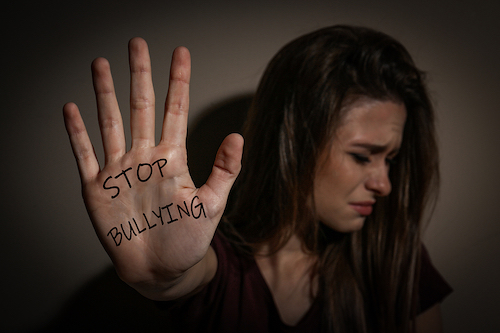 Teenagers who bully may be using aggression as a technique to climb the social ladder.
Teenagers who bully may be using aggression as a technique to climb the social ladder.
Research from UC Davis published recently in the American Journal of Sociology found that teens who harass, bully or victimize their peers don’t always do this due to an unhealthy home environment or due to psychological problems, but out of a desire to strategically move up in a school’s social hierarchy.
This may explain why friends sometimes bully friends, and why anti-bullying programs don’t always work.
“For a long time, people who studied bullying thought it was largely driven by psychological deficiencies, emotional dysregulation, and problematic home environments. Gradually some scholars, ourselves included, started to question this perspective and suggested that bullying might also be tactical--a way to achieve popularity,” Robert Faris, author of the study and a researcher in bullying at UC David told Theravive.
“If bullying is indeed instrumental, we reasoned, then we should expect kids to bully their own friends. After all, friends are often rivals, competing for the same social positions and for the affection of mutual friends. This is the first study to test whether friends are in fact more likely to bully each other than other schoolmates.”
Studying more than 3000 students in 8th, 9th and 10th grade in North Carolina during a school year, the researchers found that teens who were friends in the fall were three times as likely to bully or victimize each other by the spring of the same school year.
“This was not simply an artifact of friendships dissolving into animosity over the course of the school year: friendships that ended before the spring were three times as likely to involve bullying, but friendships that were maintained from fall to spring were over four times as likely to involve bullying. This is also not because friends spend more time together than non-friends. We also found that schoolmates who are not themselves friends, but who have many friends in common are more likely to bully each other,” Faris said.
This can be explained, the researchers say, as the “frenemy effect”.
“Simply put, the frenemy effect is that, for adolescents anyway, the people most likely to hurt you are your own friends. Nearest and dearest, right?” Faris said.
“Kids are more likely to be bullied by their own friends, or friends of friends, because they are also their rivals for valued social positions.”
The Frenemy effect is not determined by the amount of time friends spend together.
Schoolmates whose friendships overlap perfectly are three times more likely on average to bully each other, compared with those who have no overlapping friendships. Those who share either victims or bullies are also more than twice as likely to bully each other.
“Structurally equivalent” students, who may not necessarily be friends, but who have many mutual friends are also more likely to bully each other.
The UC Davis study is the latest in a growing body of research that challenges past views of why bullies bully.
“For a long time, many people thought bullies must be emotionally maladjusted or traumatized by abuse in the home or elsewhere. It wasn't until the work of people like Tracy Vaillancourt and Dorothy Espelage and others that we discovered that bullies are often quite popular, socially accepted, and apparently well-adjusted,” Faris told Theravive.
“In my earlier work, we continued this line of inquiry and found that aggression escalates with gains in social status, at least until kids reach the pinnacle of the school hierarchy, when they begin to desist. Here, we show that the people they tend to target are their own friends, and friends of friends.”
A lack of understanding behind the reasons behind bullying may be part of the reason many anti-bullying programs fail.
“I think most anti-bullying programs don't work because kids are socially rewarded for their aggressive behavior. Indeed, KiVa, one of the most effective intervention programs, has found that popular bullies are essentially immune to their program,” Faris said.
“Some of my other research shows that kids who maintain stable friendships over time are less likely to be involved in bullying (from their friends or others), and so I hope that we can find ways to help adolescents forge stronger, more durable friendships.”
Elizabeth Pratt is a medical journalist and producer. Her work has appeared on Healthline, The Huffington Post, Fox News, The Australian Broadcasting Corporation, The Sydney Morning Herald, News.com.au, Escape, The Cusp and Skyscanner. You can read more of her articles here. Or learn more about Elizabeth and contact her via her LinkedIn and Twitter profiles.